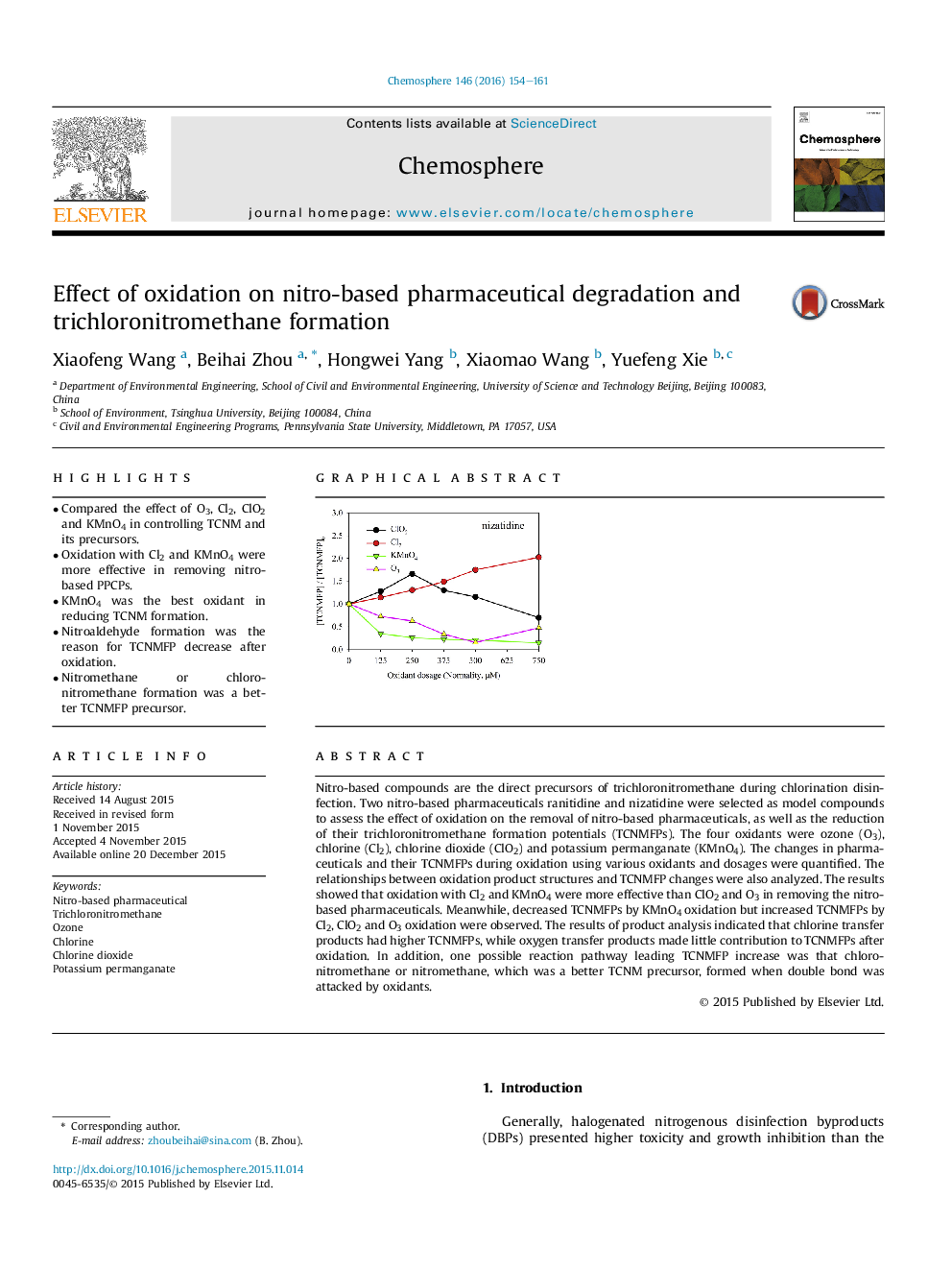| Article ID | Journal | Published Year | Pages | File Type |
|---|---|---|---|---|
| 4407975 | Chemosphere | 2016 | 8 Pages |
•Compared the effect of O3, Cl2, ClO2 and KMnO4 in controlling TCNM and its precursors.•Oxidation with Cl2 and KMnO4 were more effective in removing nitro-based PPCPs.•KMnO4 was the best oxidant in reducing TCNM formation.•Nitroaldehyde formation was the reason for TCNMFP decrease after oxidation.•Nitromethane or chloro-nitromethane formation was a better TCNMFP precursor.
Nitro-based compounds are the direct precursors of trichloronitromethane during chlorination disinfection. Two nitro-based pharmaceuticals ranitidine and nizatidine were selected as model compounds to assess the effect of oxidation on the removal of nitro-based pharmaceuticals, as well as the reduction of their trichloronitromethane formation potentials (TCNMFPs). The four oxidants were ozone (O3), chlorine (Cl2), chlorine dioxide (ClO2) and potassium permanganate (KMnO4). The changes in pharmaceuticals and their TCNMFPs during oxidation using various oxidants and dosages were quantified. The relationships between oxidation product structures and TCNMFP changes were also analyzed. The results showed that oxidation with Cl2 and KMnO4 were more effective than ClO2 and O3 in removing the nitro-based pharmaceuticals. Meanwhile, decreased TCNMFPs by KMnO4 oxidation but increased TCNMFPs by Cl2, ClO2 and O3 oxidation were observed. The results of product analysis indicated that chlorine transfer products had higher TCNMFPs, while oxygen transfer products made little contribution to TCNMFPs after oxidation. In addition, one possible reaction pathway leading TCNMFP increase was that chloro-nitromethane or nitromethane, which was a better TCNM precursor, formed when double bond was attacked by oxidants.
Graphical abstractFigure optionsDownload full-size imageDownload as PowerPoint slide
